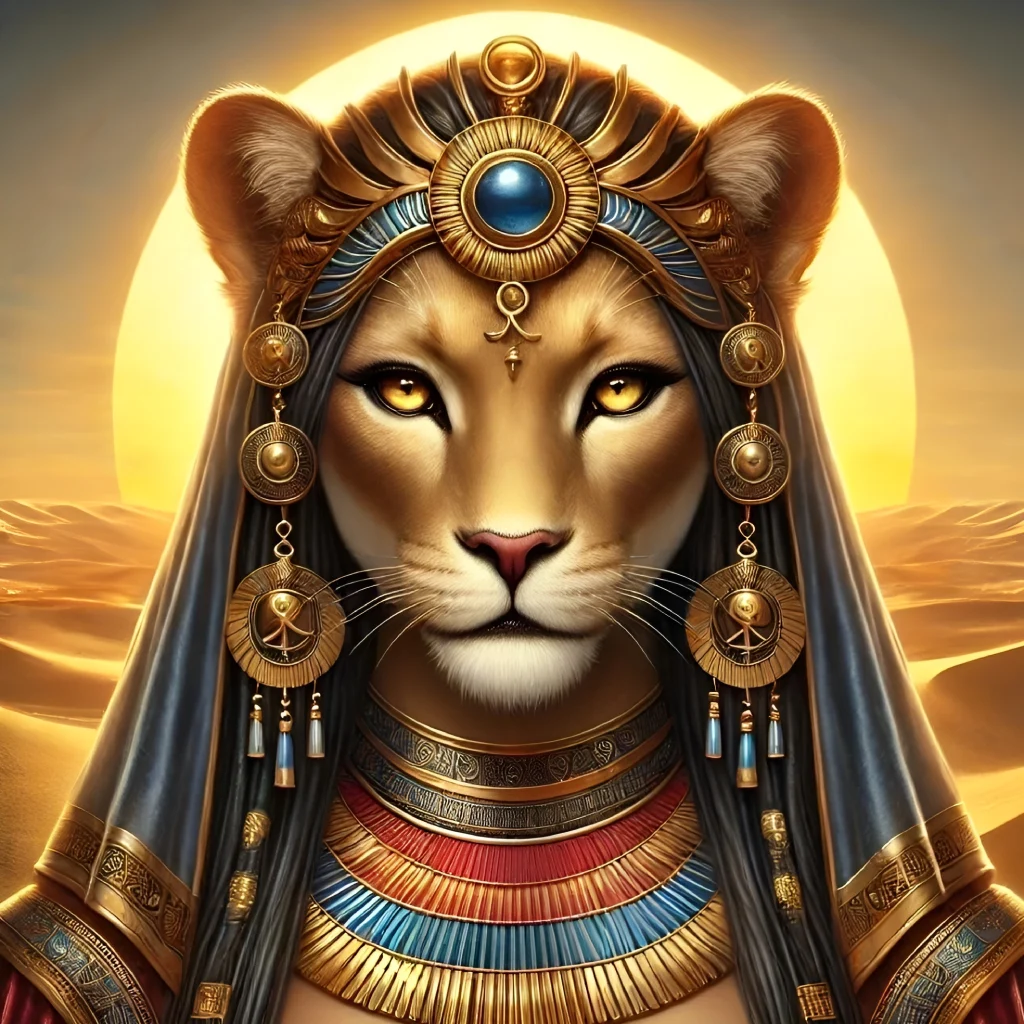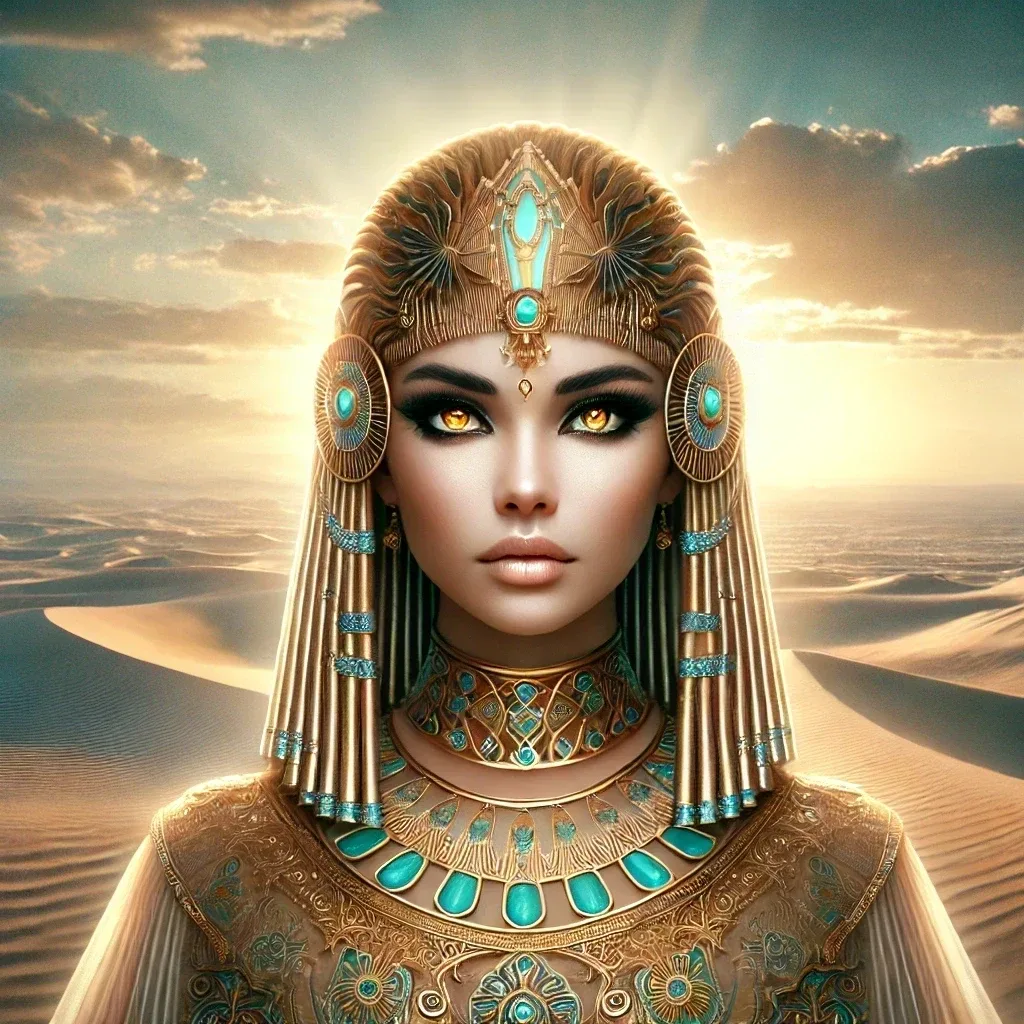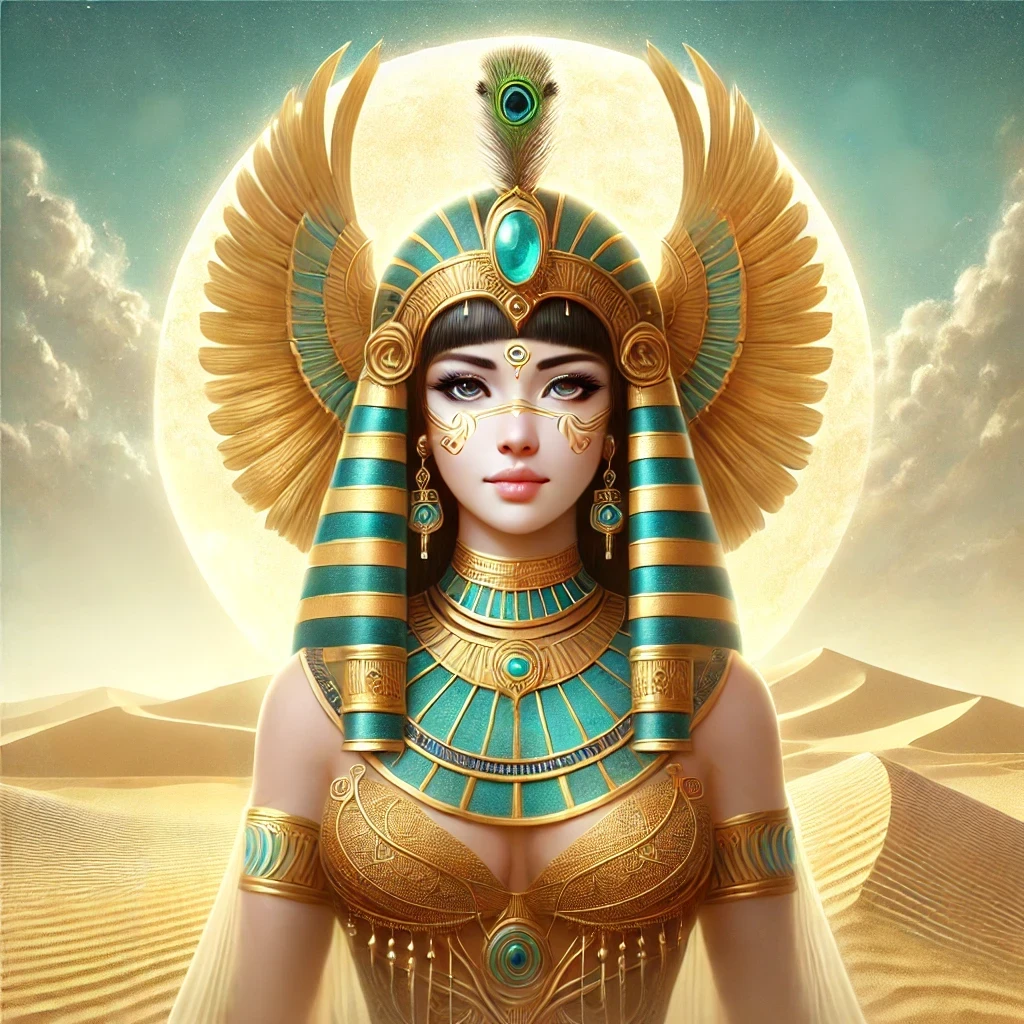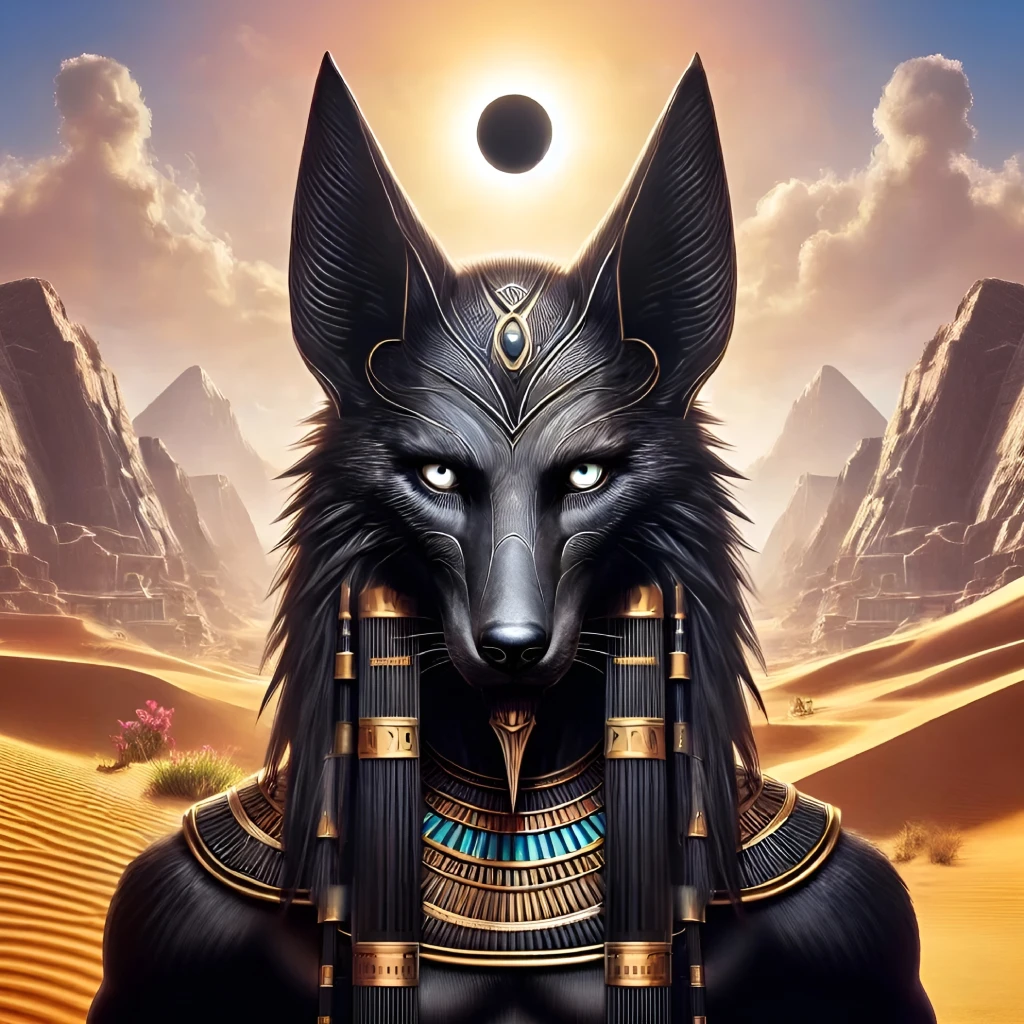Sekhmet, whose name translates to “the Powerful One,” was one of the most formidable and complex deities in ancient Egyptian religion. Known by epithets such as “Lady of Terror,” “Mistress of Dread,” and “She Who Mauls,” this lioness goddess embodied both destruction and healing. Her dual nature made her a figure of reverence and fear, as she was believed to wield the power to bring plague and pestilence, yet also to cure diseases and protect the pharaoh. Her worship spanned millennia, and her influence extended beyond Egypt, leaving an indelible mark on the ancient world.
Origins
Early Mentions in Egyptian Texts
The origins of this lioness goddess can be traced back to the Old Kingdom (c. 2686–2181 BCE), where Sekhmet first appears in the Pyramid Texts. These ancient inscriptions, carved into the walls of royal tombs, describe her as a fierce protector of the pharaoh, ensuring his safe passage to the afterlife. Her role as a guardian of the king underscores her importance in the early Egyptian state religion, where the pharaoh was seen as the divine intermediary between the gods and humanity.
Connection to the Sun God Ra
She was closely associated with Ra, the sun god, and was often depicted as his daughter or his “Eye.” In this role, she served as an instrument of his wrath, sent to punish humanity for its transgressions. The myth of the “Destruction of Mankind” recounts how Ra, angered by humanity’s rebellion, sent her to earth to exact vengeance. Her bloodlust nearly led to the annihilation of humanity, forcing Ra to intervene and stop her rampage. This myth not only highlights her destructive power but also her subservience to Ra, emphasizing the hierarchical nature of the Egyptian pantheon.
Syncretism with Other Deities
Over time, Sekhmet’s identity merged with other goddesses, such as Hathor and Bastet. While Hathor represented fertility, music, and joy, and Bastet was associated with domesticity and protection, the lioness goddess absorbed aspects of their domains, particularly in her role as a healer. This syncretism reflects the fluidity of Egyptian theology, where deities could embody multiple, sometimes contradictory, attributes.
Appearance
The Lioness Form
Sekhmet was most commonly depicted as a woman with the head of a lioness, often wearing a solar disk and uraeus (a rearing cobra) on her head. This imagery emphasized her connection to Ra and her role as a protector of the pharaoh. The lioness, a symbol of ferocity and power, was an apt representation of her destructive capabilities.
The Red Dress
In many depictions, she is shown wearing a red dress, symbolizing blood and fire. This color choice reinforced her association with violence and warfare, as well as her ability to ward off evil. The red dress also linked her to the desert, a place of danger and death in Egyptian cosmology.
Weapons and Attributes
She was often depicted holding an ankh, the symbol of life, in one hand and a scepter in the other. These objects highlighted her dual nature: while she could bring death and destruction, Sekhmet also had the power to grant life and healing. In some representations, she is shown wielding a knife or a bow, further emphasizing her martial prowess.
Abilities
Bringer of Plague and Pestilence
As the “Lady of Pestilence,” Sekhmet was believed to have the power to unleash diseases upon humanity. This aspect of her character made her both feared and revered, as she could just as easily withdraw her wrath and restore health. Priests and healers often invoked her name in rituals aimed at curing illnesses, demonstrating the Egyptians’ belief in her capacity for both harm and healing.
Protector of the Pharaoh
Her role as a guardian of the pharaoh was central to her identity. She was believed to accompany the king into battle, ensuring his victory and protecting him from harm. This martial aspect of her character made her a patron deity of warriors and a symbol of Egypt’s military might.
Healer and Restorer
Despite Sekhmet’s fearsome reputation, she was also venerated as a healer. Temples dedicated to her often functioned as centers of medicine, where priests practiced healing rituals and administered remedies. Her ability to cure diseases was seen as a manifestation of her benevolence, balancing her destructive tendencies.
Domain
The Desert and the Battlefield
Sekhmet’s domain extended to the desert, a place of danger and death, as well as the battlefield, where her ferocity was believed to turn the tide of war. These liminal spaces, where life and death hung in the balance, were fitting realms for a goddess who embodied both destruction and protection.
The Sun and the Sky
As the “Eye of Ra,” she was closely associated with the sun and the sky. Her role as a solar deity linked her to the cycles of day and night, as well as the passage of the sun across the heavens. This connection to the celestial realm underscored her importance in the Egyptian cosmos.
Myths
The Destruction of Mankind
One of the most famous myths involving Sekhmet is the “Destruction of Mankind.” In this story, Ra sends her to earth to punish humanity for its rebellion. However, her bloodlust becomes uncontrollable, and she nearly wipes out all of humanity. To stop her, Ra tricks her into drinking beer dyed red to resemble blood. Intoxicated, she falls asleep and is returned to the heavens, sparing humanity from total annihilation. This myth illustrates her destructive power and the need for divine intervention to maintain balance.
The Healing of Horus
In another myth, she is called upon to heal Horus, the falcon-headed god, after he is poisoned by Set. Using her knowledge of medicine and magic, she restores him to health, demonstrating her role as a healer. This story highlights her dual nature, as she is both a bringer of death and a restorer of life.
Symbolism
The Lioness
The lioness was her primary symbol, representing power, ferocity, and protection. This animal was revered in Egyptian culture for its strength and hunting prowess, making it an appropriate emblem for a goddess of war and healing.
The Solar Disk and Uraeus
The solar disk and uraeus on Sekhmet’s head symbolized her connection to Ra and her role as a protector of the pharaoh. These symbols also linked her to the concept of divine kingship, reinforcing her importance in the Egyptian state religion.
The Color Red
Red, the color of blood and fire, was closely associated with her. It symbolized her destructive power and her ability to ward off evil. The use of red in her iconography reinforced her role as a goddess of both violence and protection.
Worship
Temples and Shrines
Sekhmet’s worship was centered in Memphis, where she was venerated alongside Ptah, the creator god, and their son, Nefertem. Temples dedicated to her were also found in Thebes and other major cities. These temples often served as centers of healing, where priests practiced medicine and performed rituals to invoke her benevolence.
Rituals and Festivals
Her festivals were marked by music, dancing, and the consumption of beer, which was dyed red to resemble blood. These celebrations were intended to appease her and prevent her from unleashing her wrath upon humanity. The “Feast of Sekhmet” was one of the most important religious events in the Egyptian calendar, drawing worshippers from across the land.
Evolution of Veneration
Over time, her worship evolved, and she became increasingly associated with healing and protection. This shift reflects the changing needs and priorities of Egyptian society, as well as the adaptability of its religious practices.
Associations
Connections to Other Deities
Sekhmet was closely associated with Ra, Hathor, and Bastet, among others. These connections highlight the fluidity of Egyptian theology, where deities could share attributes and domains. Her relationship with Ra, in particular, underscores her role as an instrument of divine will.
Allies and Rivals
While she was primarily a protector of the pharaoh, she was also seen as a rival to other deities, such as Set, the god of chaos. Their antagonistic relationship reflects the broader struggle between order and chaos in Egyptian mythology.
Legacy
Decline in Worship
With the rise of Christianity and the decline of traditional Egyptian religion, her worship gradually diminished. However, her legacy endured in the form of amulets, statues, and inscriptions, which continued to be produced long after her temples had fallen into disuse.
Modern Interpretations
Today, Sekhmet is remembered as one of the most powerful and complex deities of ancient Egypt. Her dual nature as a destroyer and healer continues to captivate scholars and enthusiasts alike, offering insights into the ancient Egyptian worldview. Her enduring legacy is a testament to the profound impact she had on the religious and cultural life of one of the world’s greatest civilizations.
Trivia
1. Beer as a Tool of Deception: In the myth of the “Destruction of Mankind,” the red-dyed beer used to stop her rampage was said to have been prepared in such vast quantities that it flooded the fields. This act not only saved humanity but also became a symbolic gesture of appeasement in her rituals.
2. The 365 Statues of Sekhmet: Pharaoh Amenhotep III commissioned 365 statues of her, one for each day of the year, to protect him from illness and misfortune. Many of these statues have survived and are now displayed in museums worldwide.
3. The “Lady of the Place of the Beginning of Time”: One of her lesser-known epithets links her to the primordial era of creation, suggesting she was seen as a force present at the dawn of existence.
4. A Goddess of Menstruation: Some scholars believe she was associated with menstrual blood, symbolizing both life and destruction, further emphasizing her dual nature.
5. The “Seven Arrows of Sekhmet”: In Egyptian magic, she was believed to control seven arrows that could bring disease or misfortune. Spells were often recited to ward off these arrows.
6. The Lioness Goddess in Nubia: Her worship extended beyond Egypt into Nubia, where she was venerated as a protector of the king and a bringer of justice.
7. The “Sekhmet Pillars”: In some temples, pillars were carved with her likeness to invoke her protective presence, blending architecture with divine symbolism.
8. A Goddess of the New Year: During the New Year festival, her statues were carried in processions to ward off evil and ensure a prosperous year ahead.
9. The “Sekhmet Whisperers”: Priests who served her were sometimes called “whisperers” because they performed secretive rituals and incantations to invoke her power.
10. A Modern Muse: Her imagery has inspired modern artists, writers, and even video game designers, who draw on her fearsome and enigmatic persona to create compelling characters and stories.



